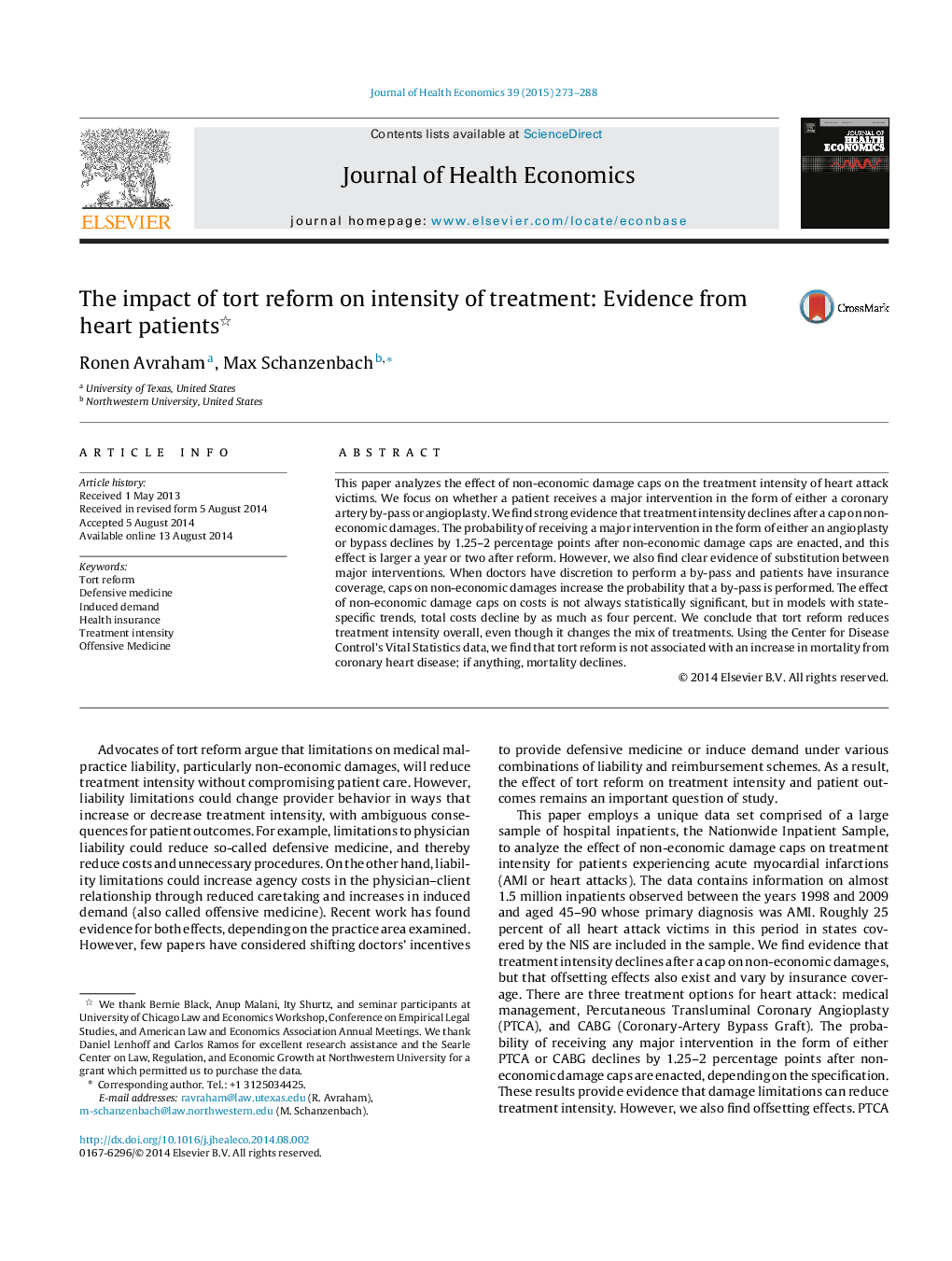| Article ID | Journal | Published Year | Pages | File Type |
|---|---|---|---|---|
| 961847 | Journal of Health Economics | 2015 | 16 Pages |
Abstract
This paper analyzes the effect of non-economic damage caps on the treatment intensity of heart attack victims. We focus on whether a patient receives a major intervention in the form of either a coronary artery by-pass or angioplasty. We find strong evidence that treatment intensity declines after a cap on non-economic damages. The probability of receiving a major intervention in the form of either an angioplasty or bypass declines by 1.25-2 percentage points after non-economic damage caps are enacted, and this effect is larger a year or two after reform. However, we also find clear evidence of substitution between major interventions. When doctors have discretion to perform a by-pass and patients have insurance coverage, caps on non-economic damages increase the probability that a by-pass is performed. The effect of non-economic damage caps on costs is not always statistically significant, but in models with state-specific trends, total costs decline by as much as four percent. We conclude that tort reform reduces treatment intensity overall, even though it changes the mix of treatments. Using the Center for Disease Control's Vital Statistics data, we find that tort reform is not associated with an increase in mortality from coronary heart disease; if anything, mortality declines.
Related Topics
Health Sciences
Medicine and Dentistry
Public Health and Health Policy
Authors
Ronen Avraham, Max Schanzenbach,
